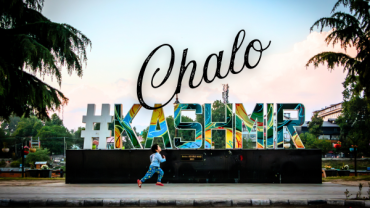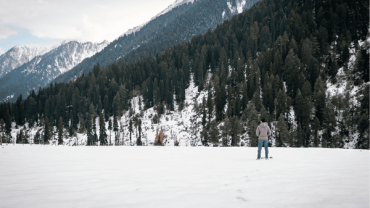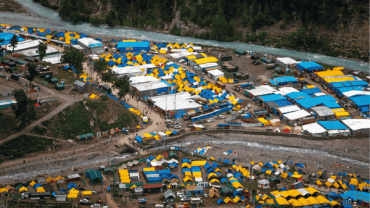Jamia Masjid Srinagar Kashmir by Ahanger HOBO.
The main mosque of Srinagar is located in Nowhatta, the beating heart of the old city. Built for the first time in 1400 by Sultan Sikander, it is a large cathedral-like rectangle that echoes Buddhist monastic architecture, and was possibly built on the ancient site of a Buddhist Vihar. In fact, the mosque’s likeness to a Buddhist Monastery was so great that Buddhist pilgrims in Kashmir were said to visit the mosque and circumambulate its perimeter in worship. Hindu influences can also be seen through the large pillared halls. The most remarkable aspect to this mosque is the 333 large wooden pillars which lends the mosque a sense of elegance and sobriety, and a cool calm fills you as you enter through its high arches. Like many of Kashmir’s wooden structures it has been burnt and rebuilt several times. Islamic architecture had grown under a completely different civilization and was alien architecture to India, having principles and a sense of beauty totally different from traditional Indian architecture. Since the craftsmen who constructed these buildings were generally conquered Indians there was amalgamation between traditional and foreign architectures. The Jamia Masjid could be considered as an example of Indo-Persian architecture. Persian architecture uses the ‘iwan’- an iwan is a rectangular hall or space, usually vaulted, walled on three sides, with one end entirely open. Persian mosques have four iwans facing each other around a courtyard, and you can see this influence in the Jamia Masjid.




Comment (0)